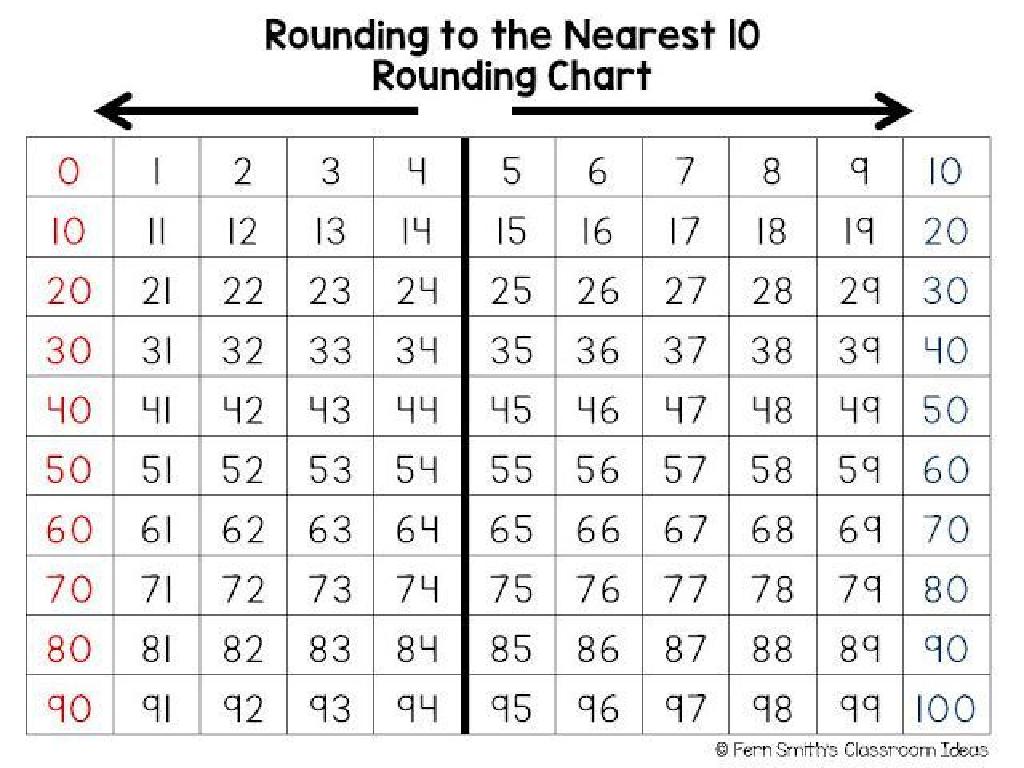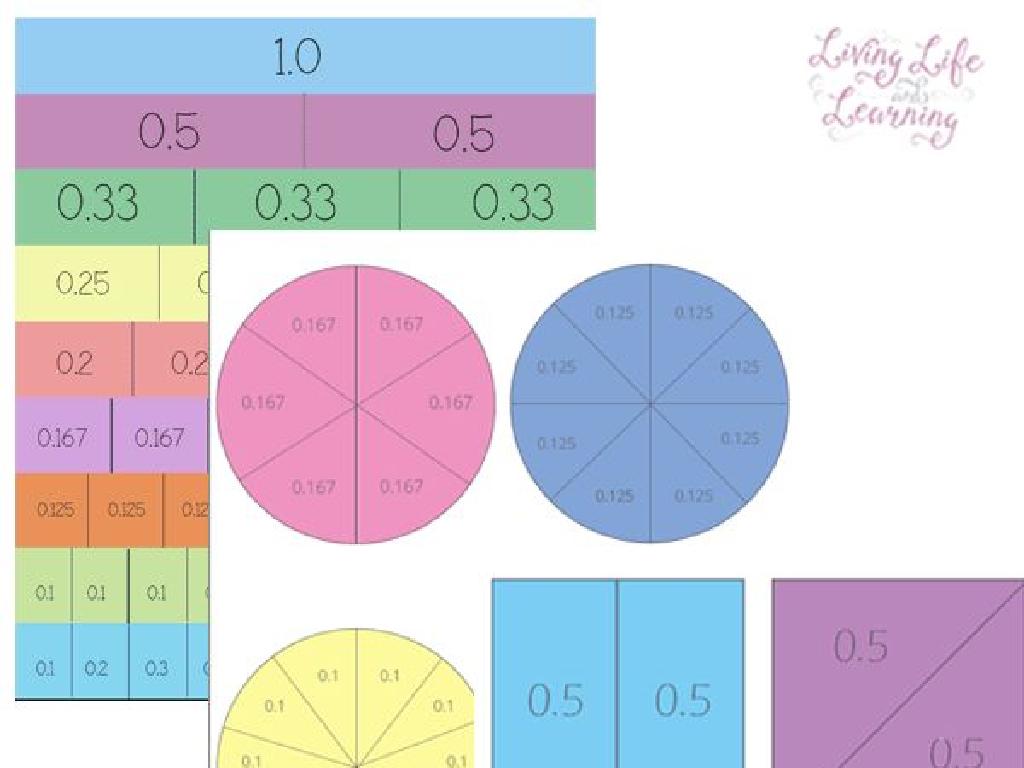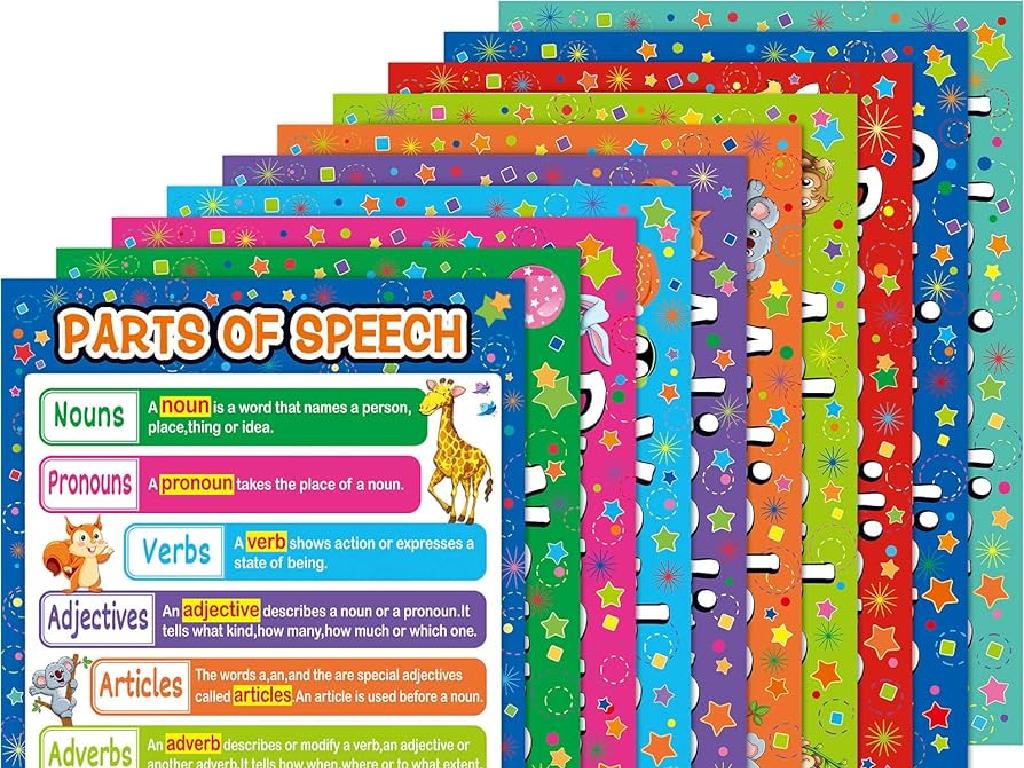Identify Independent And Dependent Events
Subject: Math
Grade: Seventh grade
Topic: Probability
Please LOG IN to download the presentation. Access is available to registered users only.
View More Content
Understanding Independent & Dependent Events in Probability
– Grasping chance and probability
– Defining independent events
– Two events are independent if the outcome of one does not affect the other
– Defining dependent events
– Dependent events are linked; the outcome of one influences the other
– Examples of both event types
– Flipping a coin (independent) vs. drawing cards without replacement (dependent)
|
This slide introduces the concept of probability and differentiates between independent and dependent events. Begin by explaining probability as the measure of the likelihood that an event will occur. Then, define independent events as those where the outcome of one event does not affect the outcome of another, such as flipping a coin multiple times. In contrast, dependent events are where the outcome of one event does affect the outcome of another, such as drawing cards from a deck without putting them back. Use real-life examples to illustrate these concepts, ensuring students understand the difference. Encourage students to think of other examples and discuss why they are independent or dependent.
Understanding Probability
– Define probability
– Probability measures the chance of an event occurring.
– Probability scale: 0 to 1
– 0 means impossible, 1 means certain.
– Examples: Impossible to Certain
– Impossible: Rolling a 7 on a die. Likely: Getting heads in a coin toss.
– Practice with real scenarios
|
Begin the lesson by defining probability as the measure of the likelihood that an event will occur. Use a probability scale to explain that the value of 0 indicates an impossible event, while the value of 1 indicates a certainty. Provide clear examples for each category: impossible, unlikely, likely, and certain events, to help students understand the concept. For instance, rolling a 7 on a standard die is impossible, while getting heads when you toss a coin is likely. Encourage students to think of their own examples and to understand that probability is a way to predict the chance of different outcomes in a situation. This foundational knowledge will be crucial as they move on to learn about independent and dependent events in probability.
Understanding Independent Events in Probability
– Define independent events
– Two events are independent if the outcome of one does not affect the other
– Examples: Coin flip and die roll
– Flipping a coin does not influence the roll of a die, and vice versa
– Calculate probabilities
– Use multiplication rule: P(A and B) = P(A) * P(B)
– Independent events in sequences
|
This slide introduces the concept of independent events in probability, which is crucial for understanding how different events can interact with each other. Start by defining independent events and emphasize that the outcome of one event has no effect on the outcome of another. Use the classic examples of flipping a coin and rolling a die to illustrate this concept, as these are simple, relatable activities with clear independent outcomes. Teach students how to calculate the combined probability of two independent events occurring by using the multiplication rule. This foundational knowledge will be applied in more complex probability scenarios as students advance in their studies.
Understanding Dependent Events in Probability
– Define dependent events
– Events where the outcome of one affects the other
– Example: Card drawing
– Drawing a card affects the chances of the next draw
– Impact on event probability
– The outcome of the first influences the second event’s likelihood
– Calculating with dependency
– Use conditional probability formulas for calculations
|
Dependent events in probability are scenarios where the outcome of one event influences the outcome of another. For example, if a card is drawn from a deck and not replaced, the deck’s composition changes, affecting the probability of drawing subsequent cards. This concept is crucial for students to understand how probabilities are not always independent of each other. Teach students to calculate the probability of dependent events using conditional probability formulas and emphasize the importance of considering previous outcomes when predicting subsequent events.
Independent vs Dependent Events in Probability
– Characteristics of independent events
– Two events are independent if the outcome of one does not affect the other
– Characteristics of dependent events
– Dependent events are linked; the outcome of one influences the other
– Impact on probability calculations
– Knowing the type of events guides us in using the correct probability rules
– Significance of understanding differences
– Grasping these concepts is crucial for accurate predictions in complex scenarios
|
This slide aims to clarify the distinction between independent and dependent events, which is fundamental in probability theory. Independent events occur when the outcome of one event does not impact the probability of another event occurring. In contrast, dependent events are interconnected, where the outcome of one event affects the likelihood of the subsequent event. Understanding these differences is vital for students as it affects how they calculate the overall probability of combined events. Emphasize the importance of this concept through examples, such as flipping a coin (independent) versus drawing cards without replacement from a deck (dependent).
Probability: Independent vs. Dependent Events
– Determine event independence
– Calculate event probabilities
– Use formulas: P(A and B) = P(A) * P(B) for independent events
– Discuss answers with peers
– Understand reasoning behind solutions
– Why does or doesn’t one event affect the other?
|
This slide is aimed at engaging students with practice problems to identify and differentiate between independent and dependent events in probability. Students will calculate the probability of given events using appropriate formulas and methods. They are encouraged to work collaboratively, discussing their answers and the reasoning behind their solutions with classmates. This will not only help them understand the concepts better but also develop their communication and critical thinking skills. As a teacher, facilitate the discussion by asking guiding questions and providing feedback. Possible activities include flipping a coin and rolling a die to see if one affects the outcome of the other, or drawing cards from a deck with and without replacement.
Class Activity: Exploring Probability with Coins and Dice
– Conduct a coin and dice experiment
– Record all possible outcomes
– Note outcomes like heads or tails, and dice numbers
– Discuss findings in groups
– Share observations and compare with theoretical probability
– Reflect on the concept of probability
– How do independent events affect the overall results?
|
This activity is designed to provide students with a practical understanding of probability through hands-on experience. Students will flip coins and roll dice to gather data on independent events. They should record the outcomes of each flip and roll, noting the frequency of each result. After collecting data, students will form groups to discuss their findings, comparing observed results with the expected theoretical probability. Encourage them to consider how the independence of each event (coin flip or dice roll) contributes to the overall outcome. The teacher should circulate to guide discussions, ensuring students grasp the concept of independent versus dependent events. Possible variations of the activity could include using different numbers of coins or dice, or introducing scenarios with dependent events for contrast.
Wrapping Up: Independent & Dependent Events
– Recap: Independent vs. Dependent
– Independent events don’t affect each other, while dependent events do.
– Probability’s role in decisions
– Understanding probability helps us make informed choices in daily life.
– Homework: Probability Worksheet
– Complete the worksheet to identify and calculate event probabilities.
– Practice makes perfect!
|
As we conclude today’s lesson, ensure students understand the difference between independent and dependent events in probability. Emphasize how probability is not just a mathematical concept but a tool for making everyday decisions, such as assessing risks and predicting outcomes. For homework, students will reinforce their learning by completing a worksheet that requires them to identify types of events and calculate their probabilities. This practice will help solidify their understanding and prepare them for more complex probability problems. Encourage students to attempt all questions and remind them that practice is key to mastering the concepts.






